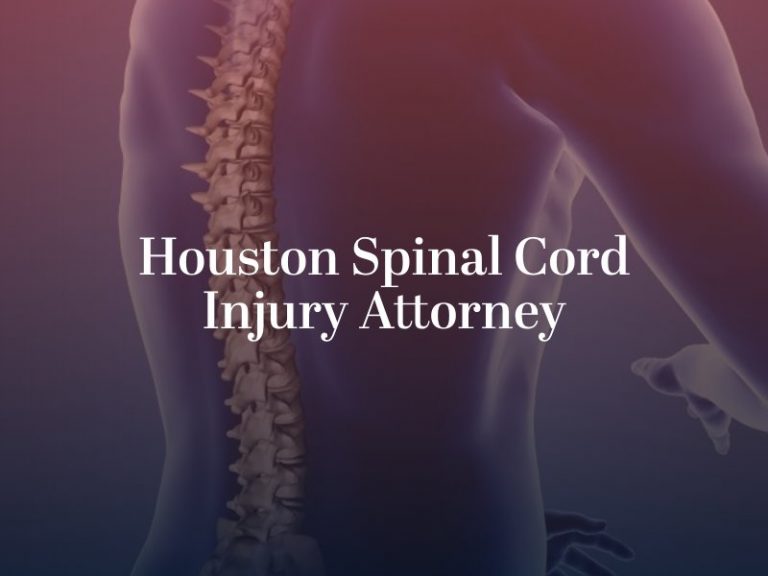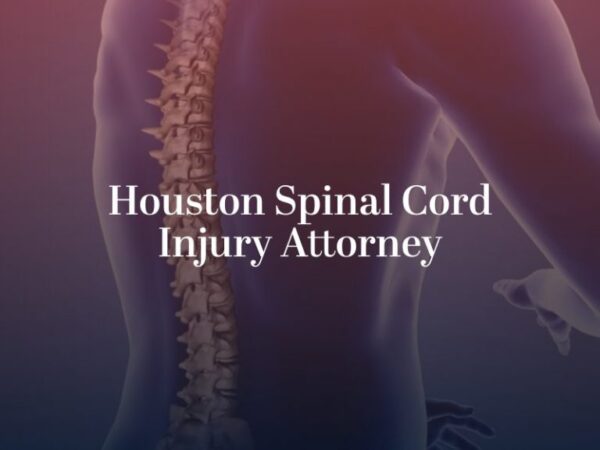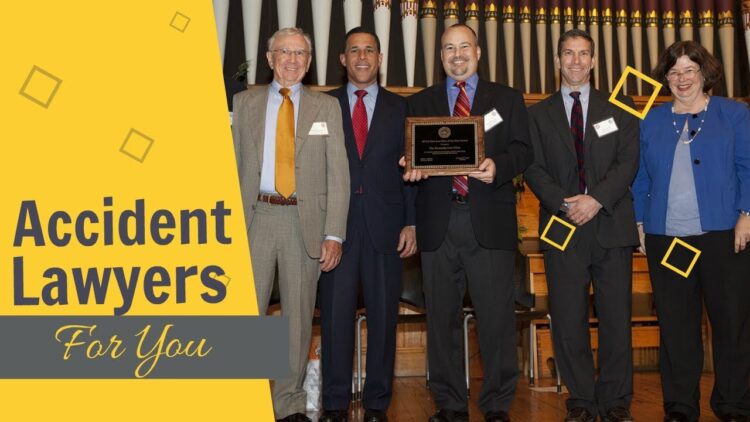
Introduction

Spinal cord injuries (SCIs) are life-altering events that can have devastating consequences for victims and their families. These injuries occur when the spinal cord, a bundle of nerves that runs from the brain down the back, is damaged. This damage can result in a loss of function, including paralysis, loss of sensation, and impaired bowel and bladder control.
The role of spinal cord injury lawyers is to help victims obtain compensation for their injuries. This compensation can help cover medical expenses, lost wages, and other costs associated with the injury. Spinal cord injury lawyers also work to ensure that victims receive the medical care and rehabilitation they need to maximize their recovery.
Impact of Spinal Cord Injuries
The impact of a spinal cord injury can vary depending on the severity of the injury. Some people may experience only minor symptoms, while others may be paralyzed from the neck down. Common symptoms of a spinal cord injury include:
– Paralysis
– Loss of sensation
– Impaired bowel and bladder control
– Difficulty breathing
– Sexual dysfunction
– Chronic pain
Spinal cord injuries can also have a significant impact on a person’s mental and emotional health. Victims may experience depression, anxiety, and post-traumatic stress disorder (PTSD). They may also struggle to adjust to their new life and find it difficult to participate in activities they once enjoyed.
Types of Spinal Cord Injuries
Spinal cord injuries (SCIs) are serious injuries that can cause permanent damage to the spinal cord and affect a person’s mobility, sensation, and bodily functions. The severity of an SCI depends on the location and extent of the injury.
There are two main types of SCIs: complete and incomplete. A complete SCI is an injury that completely severs the spinal cord, resulting in a total loss of sensation and motor function below the level of the injury. An incomplete SCI is an injury that does not completely sever the spinal cord, leaving some sensation and motor function below the level of the injury.
Complete Spinal Cord Injuries
Complete SCIs are the most severe type of SCI and can cause paralysis below the level of the injury. The symptoms of a complete SCI include:
- Loss of sensation below the level of the injury
- Loss of motor function below the level of the injury
- Loss of bowel and bladder control
- Sexual dysfunction
- Difficulty breathing
- Cardiac problems
Incomplete Spinal Cord Injuries
Incomplete SCIs are less severe than complete SCIs and can cause a range of symptoms, depending on the extent of the injury. The symptoms of an incomplete SCI include:
- Weakness or numbness below the level of the injury
- Difficulty with balance and coordination
- Bowel and bladder problems
- Sexual dysfunction
- Pain
- Spasticity (muscle stiffness)
Legal Considerations for Spinal Cord Injuries
Spinal cord injuries can have a devastating impact on an individual’s life, both physically and financially. Victims of spinal cord injuries have legal rights and options to seek compensation for their losses and damages.
There are various types of compensation available to spinal cord injury victims, including:
- Medical expenses: This includes the costs of hospitalization, surgery, rehabilitation, and ongoing medical care.
- Lost wages: Victims may be entitled to compensation for lost wages due to their inability to work as a result of their injuries.
- Pain and suffering: This compensation addresses the physical and emotional pain and suffering experienced by the victim.
- Loss of enjoyment of life: This compensation acknowledges the loss of activities and experiences that the victim can no longer enjoy due to their injuries.
- Punitive damages: In some cases, punitive damages may be awarded to punish the responsible party for their negligence or wrongdoing.
Statute of Limitations
It is important to note that there is a statute of limitations for filing a spinal cord injury claim. This varies by jurisdiction, but generally, victims have a limited amount of time to file their claim after the injury occurs. Failure to file within the statute of limitations may result in the loss of the right to seek compensation.
Finding a Spinal Cord Injury Lawyer

When you or a loved one has suffered a spinal cord injury, finding the right lawyer is crucial. Here are some tips to help you in your search:
Look for an attorney who specializes in spinal cord injury law. This type of injury is complex and requires a lawyer who understands the specific legal issues involved.
Experience and Expertise
- Consider the lawyer’s experience in handling spinal cord injury cases.
- Inquire about their success rate in obtaining favorable outcomes for their clients.
- Check if they have any special certifications or training in spinal cord injury law.
Factors to Consider
- Communication skills: Choose a lawyer who is responsive and easy to communicate with.
- Fees and costs: Discuss the lawyer’s fees and any other costs associated with their services.
- Location: Consider the lawyer’s location and whether it is convenient for you.
The Legal Process

Navigating a spinal cord injury lawsuit can be a complex and daunting process. Understanding the steps involved, the roles of the plaintiff and defendant, and the significance of evidence and documentation is crucial for a successful outcome.
The legal process typically begins with filing a complaint, outlining the plaintiff’s allegations and seeking compensation for damages. The defendant then has the opportunity to respond, admitting or denying the claims. Discovery follows, where both parties exchange information and evidence, including medical records, expert reports, and witness statements.
The Plaintiff’s Role
The plaintiff, the individual who suffered the spinal cord injury, bears the burden of proving the defendant’s negligence or wrongdoing caused their injuries. They must present evidence to support their claims, such as medical documentation, expert testimony, and witness accounts.
The Defendant’s Role
The defendant, the party being sued, has the right to defend against the plaintiff’s claims. They can present evidence to dispute the plaintiff’s allegations, such as challenging the extent of injuries or questioning the defendant’s liability.
Evidence and Documentation
Evidence and documentation play a critical role in spinal cord injury lawsuits. Medical records provide a comprehensive account of the plaintiff’s injuries, treatment, and prognosis. Expert testimony from medical professionals, engineers, or economists can help establish the extent of the plaintiff’s damages and the defendant’s liability.
Damages in Spinal Cord Injury Cases
In spinal cord injury cases, damages are awarded to compensate victims for their losses and to deter future negligent behavior. Damages can be divided into two main categories: compensatory damages and punitive damages.
Compensatory damages are intended to make the victim whole again by reimbursing them for their financial losses and compensating them for their pain and suffering. Punitive damages are awarded in addition to compensatory damages to punish the defendant and deter them from engaging in similar conduct in the future.
Types of Compensatory Damages
- Medical expenses: These damages cover the costs of past and future medical expenses, including hospitalization, surgery, rehabilitation, and medication.
- Lost wages: These damages compensate the victim for wages they have lost due to their injury and for any future loss of earning capacity.
- Pain and suffering: These damages compensate the victim for the physical and emotional pain and suffering they have experienced as a result of their injury.
- Loss of enjoyment of life: These damages compensate the victim for the loss of enjoyment of life they have experienced as a result of their injury.
Calculating Damages
The amount of damages awarded in a spinal cord injury case will vary depending on the severity of the injury and the specific circumstances of the case. In general, however, the following factors will be considered:
- The nature and extent of the injury
- The victim’s age, life expectancy, and earning capacity
- The victim’s pain and suffering
- The victim’s loss of enjoyment of life
- The defendant’s fault
Typical Damage Awards
The following are examples of typical damage awards in spinal cord injury cases:
- $1 million to $5 million for a complete spinal cord injury
- $500,000 to $2 million for a partial spinal cord injury
- $100,000 to $500,000 for a minor spinal cord injury
It is important to note that these are just examples, and the actual amount of damages awarded in a particular case will vary depending on the specific circumstances of the case.
Alternative Dispute Resolution
Alternative dispute resolution (ADR) is a process of resolving disputes without going to court. There are many different methods of ADR, each with its own advantages and disadvantages.
The most common methods of ADR are:
- Mediation: Mediation is a process in which a neutral third party helps the parties to reach an agreement. The mediator does not decide the case, but instead helps the parties to communicate and negotiate.
- Arbitration: Arbitration is a process in which a neutral third party (an arbitrator) makes a binding decision on the case. The arbitrator’s decision is final and binding on the parties.
- Negotiation: Negotiation is a process in which the parties try to reach an agreement on their own, without the help of a neutral third party.
- Conciliation: Conciliation is a process in which a neutral third party helps the parties to reach an agreement, but the conciliator does not make a binding decision on the case.
The advantages of ADR include:
- It is often faster and less expensive than going to court.
- It is more private than going to court.
- It can be more flexible than going to court.
- It can help to preserve relationships between the parties.
The disadvantages of ADR include:
- It is not always binding on the parties.
- It can be difficult to find a neutral third party who is acceptable to both parties.
- It can be difficult to enforce an ADR agreement.
ADR can be a successful way to resolve disputes without going to court. However, it is important to choose the right method of ADR for the particular dispute and to be aware of the advantages and disadvantages of each method.
Examples of Successful Alternative Dispute Resolutions
There are many examples of successful ADRs. One example is the mediation of the Israeli-Palestinian conflict. In 1993, the parties to the conflict agreed to a peace process that included mediation by the United States. The mediation process was successful in helping the parties to reach a number of agreements, including the Oslo Accords.
Another example of a successful ADR is the arbitration of the World Trade Organization (WTO). The WTO is an international organization that resolves disputes between its member countries. The WTO’s dispute settlement system is based on arbitration. The arbitration process has been successful in resolving a number of disputes between WTO member countries.
Spinal Cord Injury Resources
Navigating the aftermath of a spinal cord injury can be overwhelming, but there are numerous resources available to provide support and assistance. These resources can offer guidance, financial aid, and legal assistance to help victims and their families cope with the challenges they face.
Below is a comprehensive list of resources that can provide invaluable support to spinal cord injury victims:
Support Groups
- Christopher & Dana Reeve Foundation: Provides support, resources, and advocacy for people living with spinal cord injuries and their families.
- Spinal Cord Injury Association of America: Offers support, education, and advocacy for people with spinal cord injuries and their families.
- United Spinal Association: Provides support, resources, and advocacy for people with spinal cord injuries and their families.
Financial Assistance
- Social Security Disability Insurance (SSDI): Provides monthly benefits to individuals who are unable to work due to a disability, including spinal cord injuries.
- Supplemental Security Income (SSI): Provides monthly benefits to individuals with limited income and resources who are disabled, including those with spinal cord injuries.
- Medicaid: Provides health insurance coverage for low-income individuals and families, including those with spinal cord injuries.
Legal Aid
- American Association for Justice: Provides resources and support for lawyers who represent people with spinal cord injuries.
- National Spinal Cord Injury Association: Offers legal assistance and resources to people with spinal cord injuries.
- Disability Rights Education & Defense Fund: Provides legal assistance and advocacy for people with disabilities, including those with spinal cord injuries.





